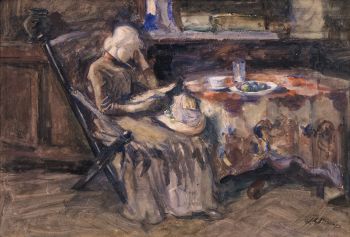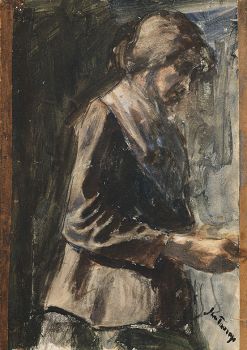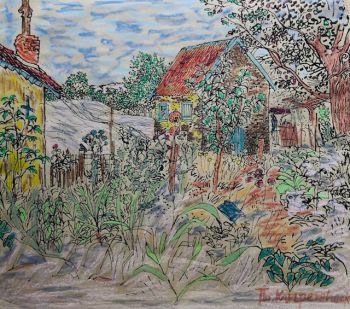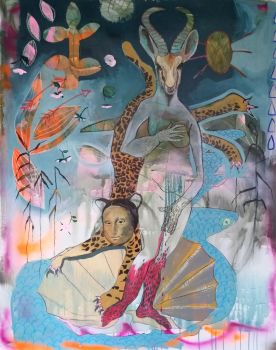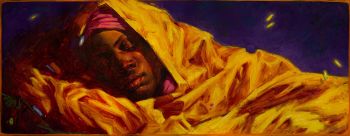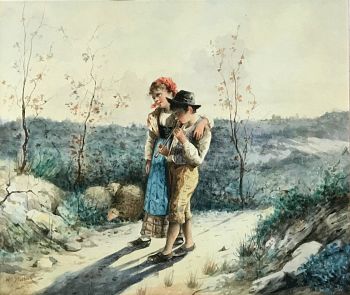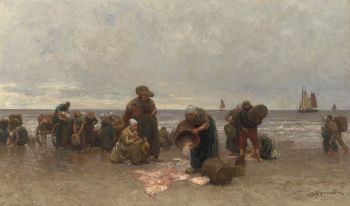Paulus, the Communist the Above Natural 1926
Jan Toorop
Black chalkPaperChalkWatercolour
35 ⨯ 23 cm
ConditionExcellent
Price on request
Studio 2000 Art Gallery
- About the artworkBlack chalk and watercolor on paper
35.4 x 23 cm.
Signed: lower left 'J.th Toorop'
(Study for the St. Paul's panel of triplets)
Provenance: Private collection, the Netherlands.
Exhibited: Domburg, "Jan Toorop: Traces of a Life", 2005; Katwijk, Katwijks Museum, "Jan Toorop (1858-1928); Late Symbolism ", 2001-2002; Zeist, Het Slot Zeist, "Jan Toorop in Slot Zeist", 1995-96.
Literature: H. Kraaij and W. Rothuizen, Jan Toorop: Late Symbolism, Amsterdam 2001 p. 119; W. Rothuizen, Jan Toorop: In his time, Amsterdam 1998 p. 119; W. Lutke, Van Toorop to Mussolini, Oisterwijk 1928, p. 105 VII; J. van Ginneke S.J., Credo in Unam Sanctam: Lectures on Catholicism for non-Catholics, Rotterdam 1927; A. Mak, L'Oeuvre De Jan Toorop, Amsterdam 1926 pl. 54, K. van Hoek and A. Plasschaert, Jan Th. Toorop remembrance, Amsterdam 1930, p. 32. - About the artist
Jan (Johann Theodorus) Toorop was born on the isle of Java, Poerworedjo, in the year 1858. In 1869 his family moved to The Netherlands, where they believed Toorop could obtain better education. After a childhood of poor concentration and poor grades, Toorop applied to the Academy of Arts in Amsterdam, focussing mostly on sculpture and applied arts.
In 1882 Toorop left for the city of Bruxelles, where he gained popularity as a member of the group Les Vingt, a group of twenty artists who would exhibit their work twice a year in February and March.
Jan Toorop, together with Van Gogh and Mondriaan, belongs to the group of most important Dutch artists from the period around 1900. These major artists had their focus on new, international developments in art and inspired other artists themselves. Toorop can be seen as a great source of inspiration of Gustave Klimt.
Toorop's work knows an immense popularity and is often associated with Art Nouveau, mainly because of one well-known advertisement for a certain kind of salad oil. However, Toorop's oeuvre should not be seen as Art Nouveau only. He was known as a neo-impressionist and symbolist as well, switching between styles of working and combining them in response to his environment.
Are you interested in buying this artwork?
Artwork details
Related artworks
- 1 - 4 / 12
- 1 - 4 / 24
- 1 - 4 / 24
- 1 - 4 / 24
Raoul Hynckes
"Still Life with Fishing Attributes"1940 - 1950
Precio a consultarStudio 2000 Art Gallery
Jan Sluijters
interior with two ladies and a girl1900 - 1950
Precio a consultarStudio 2000 Art Gallery
1 - 4 / 12



